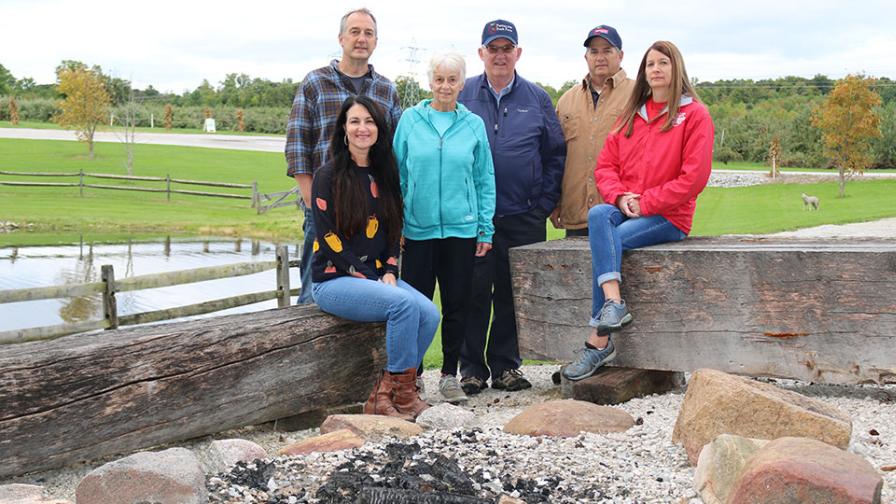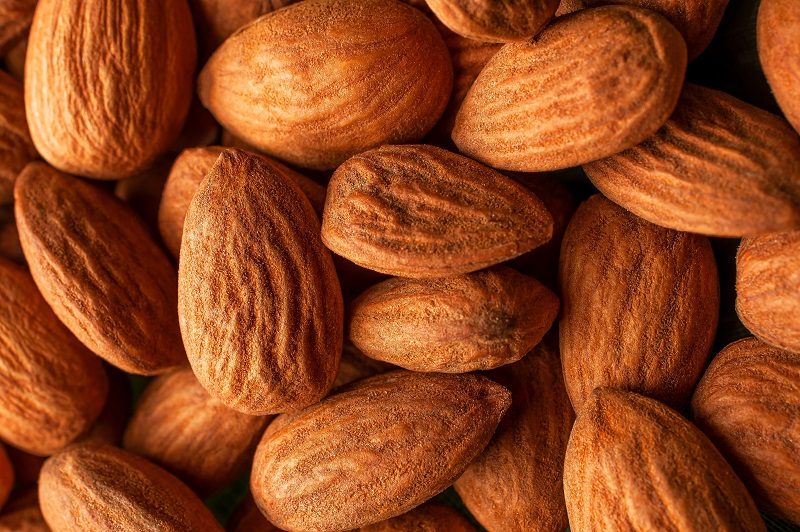A Plan To Succeed: Why The Passion Still Burns Hot for Patterson Fruit Farm

The Patterson family of Patterson Fruit Farm in Chesterland, OH, know the importance of succession planning. The operation has transitioned through six generations and counting already.
Photo by Thomas Skernivitz
Adopting a succession plan is one thing, validated by the fact only a quarter of all U.S. farmers has accomplished the feat. Continually adapting that plan is another challenge altogether. The Patterson family, owners of Patterson Fruit Farm, 25 miles east of Cleveland, OH, has learned as much since 2007. At the very least, when they break bread over Thanksgiving and Christmas dinners, those are not their only roundtable discussions of the year.
“We put in a basic plan 15 years ago,” Bill Patterson says. “What we have learned since then … is that time is our friend, and the more time we have, the more information we have. We’ve set up a process now where, on a yearly basis, we take the information we’ve gained and try to reconstruct the plan with the information we have.
“Our general idea is that we’re going to sit down Jan. 1 — not that date exactly — and say, ‘If we were to die this year, here’s what happens. Do we kick out and do a buy out? Do we allow hold ownership for a period of time?’ That’s the nuts and bolts of what we’re doing.”
Lucky No. 7?
Bill Patterson, 51, and brother Dave, 53, represent the sixth generation of family ownership along with their spouses, Kristin and Pam, respectively. Their octogenarian parents, Jim and Nancy Patterson, officially relinquished the business in 2007, although their active presence on the 150-acre apple, peach, and strawberry farm has diminished little in emeritus.
“Originally Nancy and I were going to give David 45% and Bill 45%, I would keep 5%, Nancy would keep 5%, and we would keep our finger on [the business],” Jim Patterson says. “At some point we probably said to each other, ‘Why?’ So, we gave it all to them — 50/50 — and we didn’t keep anything. Keeping something would have just muddied the water down the road. We were willing to [hand the farm over].”
So, too, are Bill and Dave with their own children.
While many of the last 15 years have been static with regard to the family’s succession plan, the narrative took a turn this summer when Dave and Pam’s oldest son, John, 19, indicated for the first time that he might have interest in returning to the farm after graduating from Edinboro University of Pennsylvania, where he is a sophomore.
“That makes us start to think differently,” Bill says. “If we know one person is interested, we look at what we’re doing differently.”
And what if more than offspring is interested in representing a seventh generation? Immediately behind John on the family tree are his sister Heather, a freshman at Lakeland Community College, and Bill and Kristin’s teenage sons, Sam and Jack.
At this time last year, Bill Patterson would have said there was only a 25% chance that nephew John would someday take the reins of the business.
“Now it’s around 75%,” he says. “Heather is below 10%, Sam is below 10%, and Jack is at maybe 25%.”
Hearing those odds, grandparents Jim and Nancy are quick to remind that Dave and Bill originally attended Ohio State University to study English and business/political science, respectively.
“We got a letter from Ohio State about David transferring to the College of Agriculture from English,” Jim Patterson says. “We had to call him up and say, ‘What is this all about?’”
Not that Mom and Dad were complaining.
“We had no inkling or conversations about them coming back. There was no forcing, no pushing,” Nancy says. “But it was 100% delight when the two of them got together and decided they could work together, and they came back. What a legacy, what a gift that was for us.”
Less May Be More
That said, if more than one grandchild chooses a career away from the farm, it would not be a bad thing, according to Bill and Dave.
“I’d say one or two would be ideal. There’s a nice balance,” Bill, the President of the Ohio Farm Bureau Federation, says. “I think it probably gets trickier as you get to three or four. Not only tricky for us but also as you think about the fact we don’t only want the seventh generation to take control but also the eighth and ninth. I think the only reason it’s gone to six generations is that people have naturally paired themselves up.”
Jokes Dave: “You need to prune the family tree along the way.”
Fortunately for Patterson Fruit Farm, the transitions from first to sixth generations have been smooth, particularly the most recent evolution.
“The thing that feels most satisfying to us in life is that David and Bill get along and have made it work,” Jim Patterson says. “We literally know families — mostly agriculture but others, too — where it doesn’t work. It’s usually money that creates the issue or some sort of asset. But we work at it. There’s a lot of meaning in that one sentence.”
In turn, it makes the bad days bearable and the holidays even more special.
“No matter which generation you’re talking about, we’re all able to get together on Thanksgiving and Christmas,” Jim says. “That says a whole lot.”










